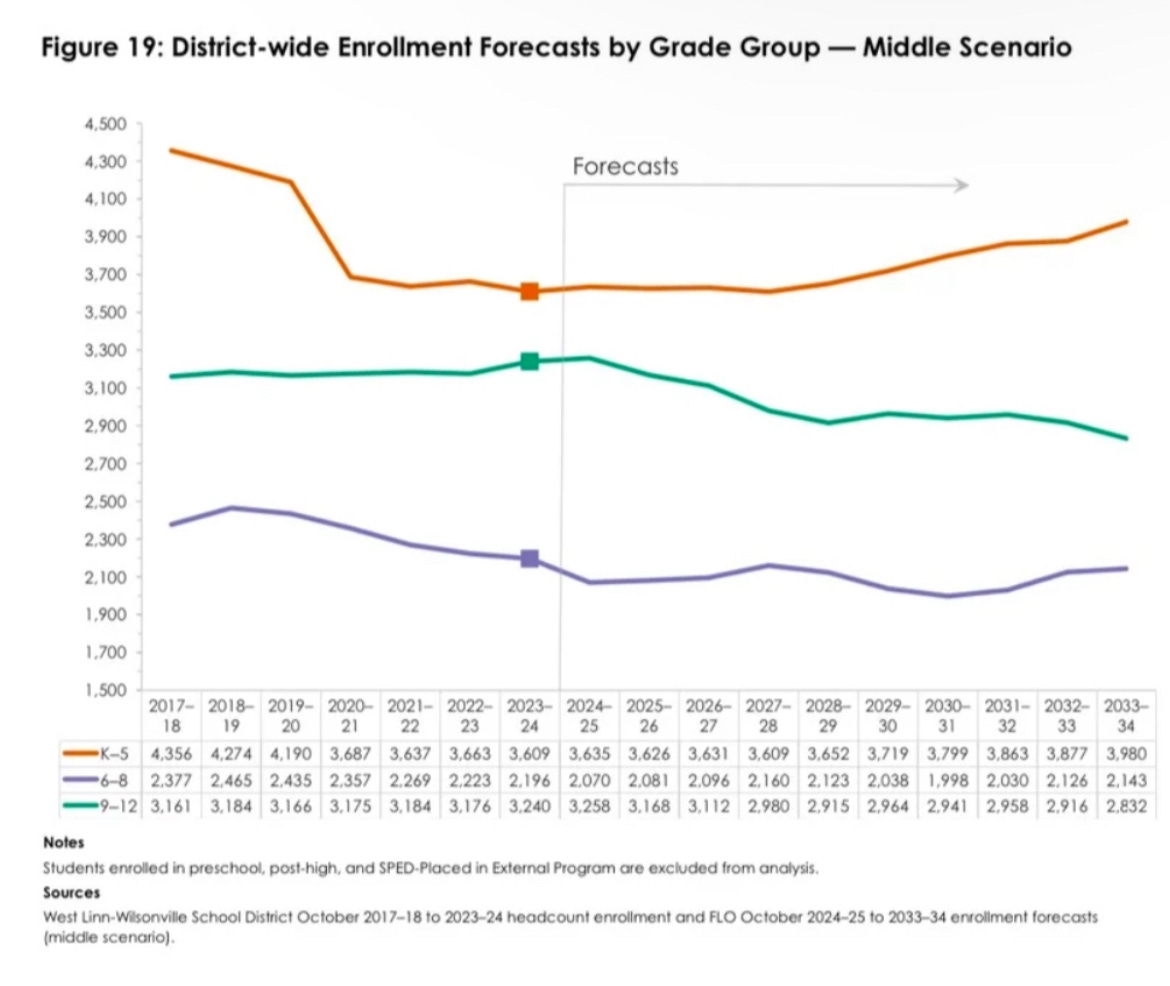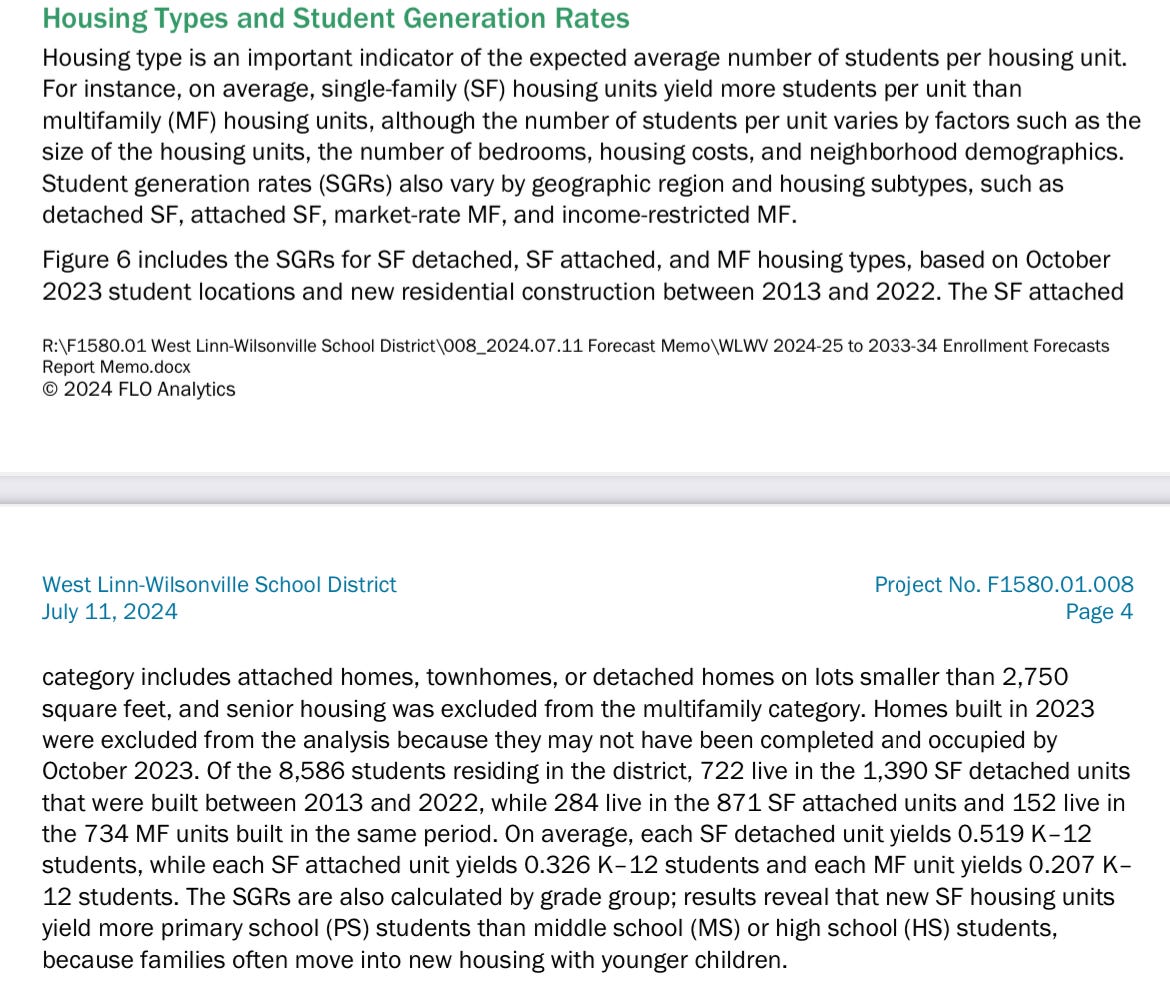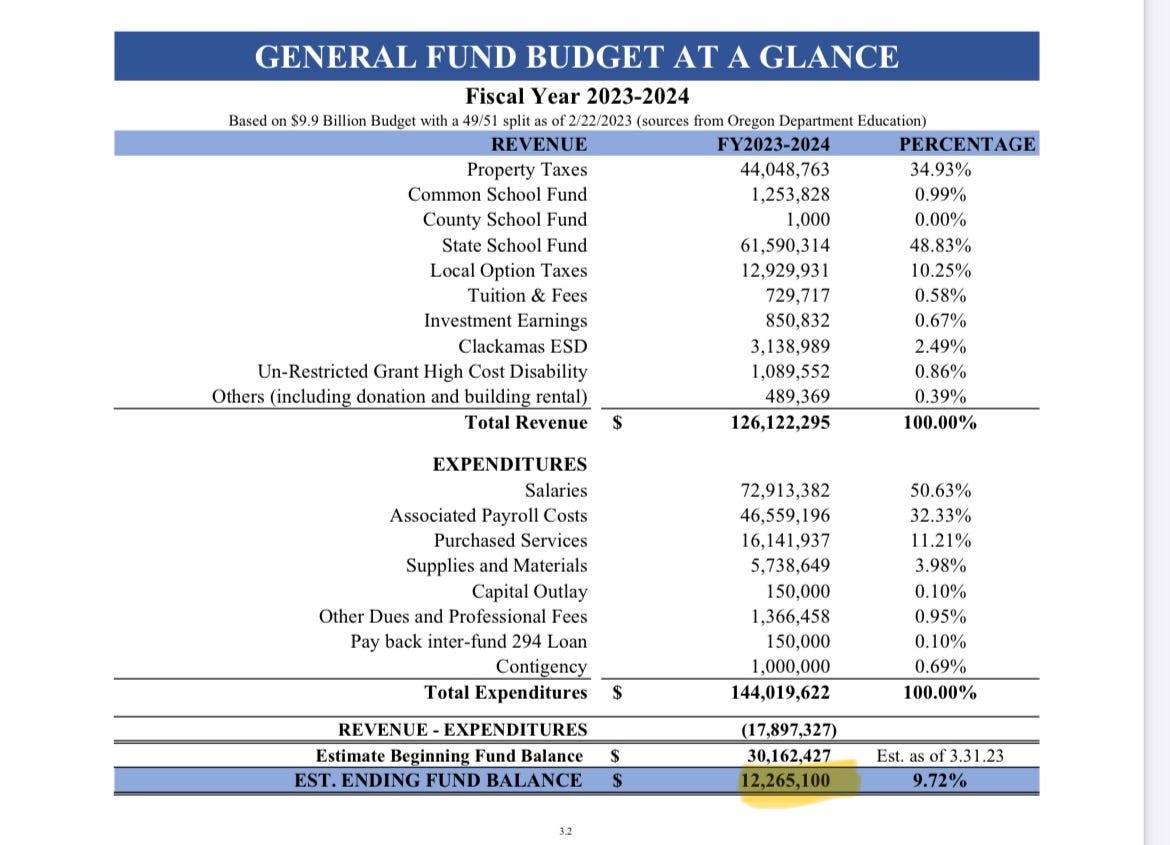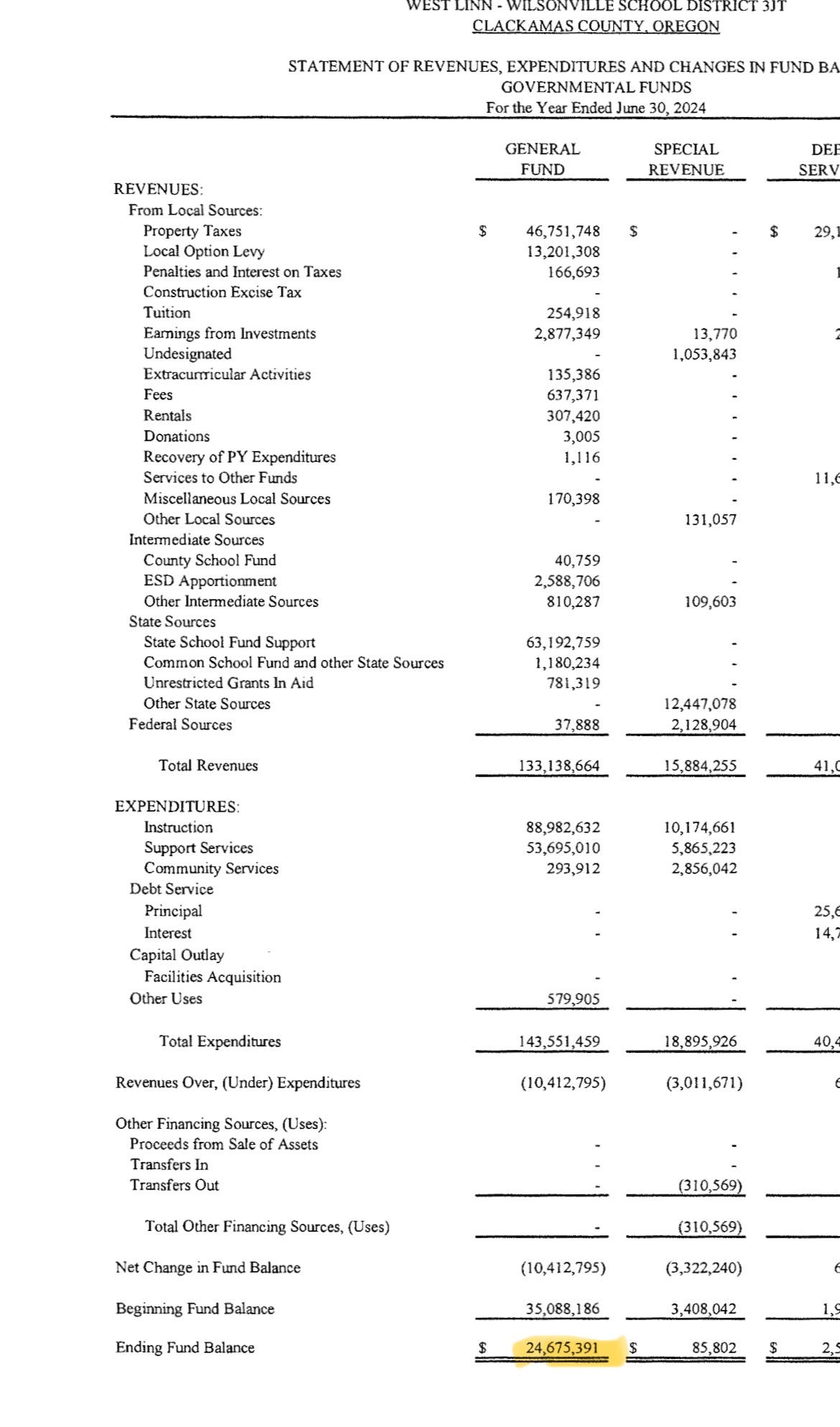As conversations about potential school closures in West Linn intensify, it’s important to pause and ask: Do we really have enough information to make such a monumental decision? The district’s memo outlines financial and enrollment challenges, but when you dig deeper, there are significant gaps in the data and reasoning that make this decision feel rushed and potentially misguided. Let’s take a closer look.
What Does Research Actually Say About School Closures?
The memo cites one study on school closures, which shows mixed results, but it’s important to highlight a key finding: academic outcomes only improve when students move to higher-performing schools. In West Linn, Bolton, Cedaroak Park, and Stafford are the district’s top three performing schools. If these schools close, students are unlikely to transfer to higher-performing environments, which means the potential academic benefits of closure are negligible.
Questionable Enrollment Projections
Enrollment projections from FLO Analytics play a critical role in justifying closures, yet these projections raise more questions than answers:
Unexplained Assumptions
FLO uses a fertility rate below the national average, without explaining why. They estimated a TFR of 1.46 however the actual national TFR was 1.6.1 this would result in an additional 458 births over a ten year period. We would require at least one more new school to accommodate those children. This significantly affects long-term enrollment forecasts.2
Stable or Growing Primary Enrollment
FLO’s own projections show that primary school enrollment will remain stable or even grow slightly over the next decade.3 If that’s the case, why are closures necessary?
Missing Margins of Error
What is the margin of error on these projections? Without understanding how reliable the data is, basing a decision on these numbers feels reckless.
Outdated Assumptions About Housing and Enrollment
The memo assumes that multi-use housing developments will generate fewer students because families won’t move into them. This is an outdated assumption. Families frequently prioritize school districts over housing type and will move into developments they can afford, especially in a desirable area like West Linn. The district risks underestimating future enrollment by ignoring this trend.4
Additionally more families are choosing to live in multi-generational households.5
Can We Trust the Budget Projections?
Budget concerns are the foundation of the argument for closures, but the district’s financial forecasting has been inconsistent. For example:
The district ended 2024 with a $24M surplus, double the $12M originally projected. This raises a critical question: if we’re consistently overestimating deficits, is the current $15M shortfall accurate?
If this trend held, the real deficit next year would be as low as $3M—or there might not be one at all. Could we be considering closing schools over a potential $3M shortfall?
Are There Better Alternatives?
Before resorting to closures, we need to consider less disruptive and more equitable solutions:
Shorten the School Year
Reducing the school year by just three days could address budget gaps without uprooting students, families, and staff.
Tackle Rising Administrative Costs
Administrative expenses have risen 71% over six years, and some salaries have doubled. These trends must be addressed before closing schools or selling properties, as these cuts alone won’t fix long-term structural issues.
Small Schools Are Thriving, Not Struggling
The memo claims that small schools face challenges, but district data paints a different picture. Bolton, Cedaroak Park, and Stafford consistently have the highest academic and social-emotional scores in the district. Far from being a liability, these schools demonstrate the benefits of smaller, more personalized learning environments.
Small Schools Could Be the Most Cost-Efficient
The memo highlights higher per-student costs at small schools but overlooks the bigger picture: If enrollment were balanced across schools, Bolton, Cedaroak Park, and Stafford could become the district’s most cost-efficient schools. Closing these efficient schools now is a short-term fix that eliminates long-term savings potential.6
Missing Data and Exaggerated Costs
The Small Schools Task Force was tasked with examining the core costs of each school, but this data hasn’t been presented in its entirety. The claim that all three schools cost $1.4M annually feels overly simplistic and ignores the unique efficiencies of each school.
Similarly, renovation costs are inflated by including non-critical items, such as playground wood chips, that are unlikely to impact the budget for years. Many of these renovations could be deferred across multiple bond cycles, reducing the immediate financial pressure.
Transportation Costs Were Miscalculated
The district’s estimate for transportation costs allocated only one new bus for Bolton, based on the assumption that 40 additional students would need transportation. However, the district has also suggested that the Mandarin program would move to a different school than the rest of Bolton’s students, which would require at least two new buses. This oversight raises a larger question: if such a key detail was missed, what other inaccuracies might exist in the data used to justify school closures? Decisions this significant require precise and thorough analysis, and errors like this undermine confidence in the process.
The Human Impact
Finally, we must consider the human cost of closures. On my block alone, six first graders walk to Bolton together every morning. If Bolton closes, these kids—who live on the same street—will likely be split between multiple schools. This breaks my heart. Schools are more than buildings; they are the heart of our neighborhoods. The disruption caused by closures will ripple through our community in ways that spreadsheets and projections can’t capture.
The Real Cost of School Closures
The following was advice by a former PPS board member and has been circulating online so I thought I would share it here.
“The most Portland Public has ever saved from closing a school is $120,000 a year. In most cases, they save much less than that (if anything at all).
The basic reasons are twofold:
1) Schools are service enterprises, and there is very little economy in combining service enterprises - you still have the same total number of teachers and classrooms, the same number of books, the same number of boxes of copier and toilet paper.
2) The District still has to maintain the building - and in this climate, that takes a lot of time, attention, and money. Even a shuttered school still has to have a custodian. The District can't turn off the electricity, water, or even gas for the heat - many PPS buildings have HVAC systems that literally cannot be shut off on their own without cutting electricity and gas, but also the underlying systems decay incredibly quickly - just consider the massive damage and disruption when Marcum School lost power during an ice storm and the water in the fire suppression system froze, breaking the pipes. The shuttered Kellogg Middle School sustained so much damage from neglect under Carol Smith that it had to be demolished and replaced. The shuttered Smith School in SW has been flooded multiple times, is covered inside with toxic mold, and will need to be demolished as a public safety hazard.
(Also, as a significant potential expense, in some cases the school receiving the kids from the shuttered building needs substantial renovations in order to be able to hold them - for instance, when PPS shuttered Humboldt School and sent the kids to Boise-Eliot, they had to spend multiple millions on significant renovations - converting the auditorium into a library, building more cafeteria space, converting general use spaces into classrooms, etc., far, far outweighing any minor savings).
I think the only way West Linn could claim $1.5 million in savings is if either a) they're planning on selling the shuttered property right away (in which case those savings will not last very long), or 2) they're making completely unwarranted assumptions.
Also, don't forget the expense of additional busing - which even for elementary school can really add up, because they aren't just having to run a bus in the morning and at the end of the school day - they also have to move kids around for after-school events, particularly athletics. (And there's another significant potential expense - if they don't have the property any more, will the District end up having to rent fields from their local Parks & Rec so that the kids can play? PPS has to do that for many - perhaps most - of its schools).”
Short term Solutions
Instead of closing schools, we could start raising funds through a foundation—a proven strategy used by many districts to bridge budget gaps. Imagine if we had started in September. By now, we could have a significant pool of resources to support small schools and offset costs.
A foundation would allow parents, businesses, and community members to actively contribute, while opening the door to corporate sponsorships and grants. West Linn has always stepped up when needed, and this could unify our efforts to preserve what makes our schools special.
A Vision for the Future
Instead of closing schools, the district could explore creative, community-centered solutions like transforming small schools into full-service community hubs. These schools could offer wraparound services, such as childcare, mental health support, and adult education, ensuring they remain vital assets to the community while addressing enrollment and financial concerns.
Final Thoughts
Closing West Linn’s small schools may seem like a quick solution to budget challenges, but the data and reasoning presented so far are incomplete and, at times, flawed. Before we make a decision that will permanently reshape our community, we need a more thorough analysis, greater transparency, and a commitment to exploring alternatives. These schools aren’t just part of our past—they’re an investment in our future. Let’s make sure we’re doing everything we can to protect them.
FRED, St. Louis Institute. https://fred.stlouisfed.org/series/SPDYNTFRTINUSA their source the World Bank. https://www.worldbank.org/ext/en/home
Flo Analytics Memorandum, 10 year demographic enrollment study full report, page 9. https://www.wlwv.k12.or.us/cms/lib/OR01001812/Centricity/Domain/100/WLWV%202024-25%20to%202033-34%20Enrollment%20Forecasts%20Report%20Memo.pdf
Flo Analytics Memorandum, 10 year demographic enrollment study full report, figure 19, middle scenario. https://www.wlwv.k12.or.us/cms/lib/OR01001812/Centricity/Domain/100/WLWV%202024-25%20to%202033-34%20Enrollment%20Forecasts%20Report%20Memo.pdf
Flo Analytics Memorandum, 10 year demographic enrollment study full report, pages 3 and 4. https://www.wlwv.k12.or.us/cms/lib/OR01001812/Centricity/Domain/100/WLWV%202024-25%20to%202033-34%20Enrollment%20Forecasts%20Report%20Memo.pdf
https://www.wbur.org/onpoint/2023/02/06/why-more-americans-are-choosing-to-live-in-multi-generational-housing.
https://marketplacehomes.com/blog/real-estate-trends/multi-family-homes-trend-in-2024/
ODE, school level expenditure report https://www.oregon.gov/ode/schools-and-districts/grants/pages/school-level-expenditure-report.aspx











Save our small schools, save our community!
Save small schools!! If you think enrollment is down now, wait until you close 3 schools and negatively impact staff, students, and their families. You'll be seeing more families withdraw to homeschooling.